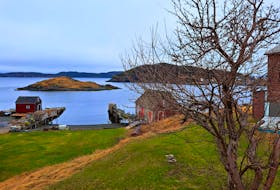I’d like to welcome Jonathan Wilkinson to his new post as Minister of Fisheries and Oceans. The fishery department, not the coast guard, he has inherited is a monstrosity of policy and regulations of which very little have to do with conservation of fish. It’s a department run amok with bureaucrats and lobbyists all juggling for control, while our inshore Newfoundland fishery, its fishing villages, its culture, is collapsing.
Time for Canada to have a fisheries minister for Canada’s fish harvesters.
U.S. President Donald Trump said it was time to drain the swamp and it is long overdue to drain the bureaucratic mess in fisheries and oceans.
Here in N.L. we have 6,300 harvesters (maybe less), 22 DFO offices, 565 employees, and a 144 enforcement officers — bit of an overkill, don’t you think, when we have only 168 RCMP officers to enforce the law in our rural areas and fishing villages.
Related story:
Newfoundland and Labrador labour groups ‘cautiously optimistic’ about new federal fisheries minister
Fish harvesters have been regulated by DFO and mother nature on the Northeast coast of Newfoundland — mostly by mother nature. If we fished with just basic conservation rules we could fish forever without damaging the stock because our fishing time is very limited because of storms, ice and size of boats.
I hope Wilkinson has more success running the Newfoundland and Labrador fishery than his last two predecessors. Their reign caused devastation to the Newfoundland and Labrador fishery: ignoring adjacency; foreigners; seal problems; over-regulating; small weekly limits and quotas; fish plants closing people moving away to other provinces for work.
Newfoundland gave Canada the largest fish resource in the world in 1949.
Look at it now — our fishing villages can’t fix up the roads, young people are moving away, we have boil orders in many towns’ water supplies, fish plants closed, we have no money. Hell, even a man by the name of Barnes buys florescent red spray paint and marks the pot holes so people won’t wreck their vehicles.
This is what the death of a fishery means to us.
We have been in a groundfish moratorium for 27 years. Imagine, 27 years when an adult cod lays over one million eggs a year, trillions of eggs laid by cod off our shores every year and by DFO science reports that the cod biomass is decreasing and it seems like DFO regulators are blaming the inshore harvesters that fish in small boats.
Our fishery, because of natural conditions and small weekly limits, averages about two months a year, yet we are facing yearly a deluge of regulations and policy in our licence conditions which mostly have nothing to do with conservation.
Wilkinson’s department cannot regulate a fishing culture and its people out of existence because it doesn’t want to take on the foreigners or seal problem that’s destroying the fish.
Wilkinson’s department can’t regulate the fish that cross over the 200-mile limit without taking custodial management of the nose and tail of the greatest fishing banks in the world, the Grand Banks.
I don’t have a secretary to write my letters, so I hope it wasn’t too mumble jumble for the new minister to read. My field of education is the fishery, for I have lived and breathed it for over 50 years.
Here’s what I do if I was Fisheries minister to bring back Canada’s great fishery on the east coast (some free advice for Wilkinson):
1. Take custody over the Flemish cap, nose and tail of the Grand Banks. Canada then would able to manage, monitor, control all the stock of fish that migrate over the 200-mile limit. Example: If you have a lake, you cannot have conservation and good science of fish just on one side.
2. Off the east coast and the Artic we have close to eight million harp seals, another seven million, hooded, gray, ring, ribbon, etc. all eating fish every day. I was told that 80,000 seals eat as much as the total TAC of fish. I would have a bounty put on all seals of $50 each for every seal tail or jaw bone turned in to DFO offices. This would be a hot topic but the right one to save our commercial fisheries. When emotionalists overrule science and fishery management, the loser is the whole ocean ecology.
3. Get back to basics on conservation rather than the thousands of regulations that have nothing to do with conservation, regulations made by lawyers for the benefit of lawyers.
4. Work with fish harvesters instead of against them. We all want the same thing, protection of the species and to be able to make a good living from the ocean. New money coming into our country from a renewable resource.
5. Uphold the principle of adjacency protocol.
6. Get clear of self-serving lobbyists, surround yourself with good science and good advisers. Remove the bureaucrats that are in the back rooms that know nothing about Canada’s fisheries, people or culture who are pushing their own agendas on conservation, animal rights, and environmental issues.
John Gillett
inshore fisherman,
Twillingate







